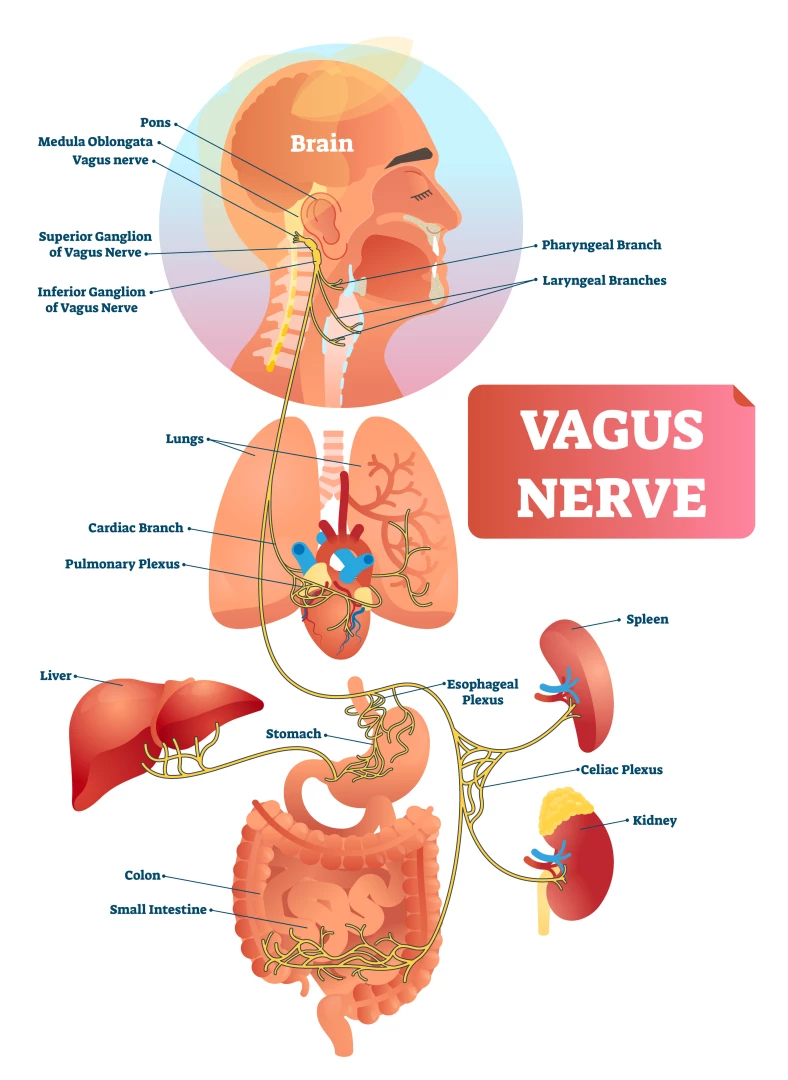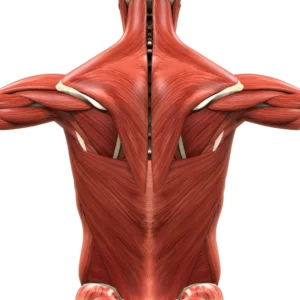Developing Interoception: How to Listen to Your Body Wisdom

Article At A Glance
The art of listening to the sensations that arise from within is called interoception. In this article, we embark on a journey to unravel the mysteries of interoception in somatic practice. We’ll explore how listening to the body can help us connect more deeply with the body’s inner wisdom.
Have you ever paused to wonder how your body speaks to you? How can you tap into the wisdom within?
Within each of us, there exists an intricate system of communication that often goes unnoticed but holds the key to our well-being and healing trauma through the body. Body sensation is how our body speaks to us. The art of listening to the sensations that arise from within is called interoception.
In this article, we embark on a journey to unravel the mysteries of interoception in somatic practice. We’ll explore how listening to the body can help us develop a rich embodied awareness that can profoundly transform our lives.
Connecting with Your Body Wisdom: What Is Interoception?
Interoception is the way our body sends us signals about our internal state. The process conveys vital information through the language of sensation. These bodily sensations carry profound significance, from the quietest murmur to a pounding heartbeat. They alert us to our basic needs, such as hunger, thirst, or fatigue, and extend beyond that to intertwine with our emotions. Interoception sends us sensations that reflect our inner states. For example, we feel butterflies in our tummy when we feel nervous or excited. We may experience a warm, fuzzy sensation of a hug or a sense of softness and ease in our body when we feel calm and relaxed.
What Does Science Say About Interoception?
Research has shown that interoception can play a key role in our decision-making, emotional regulation, and overall well-being. By tuning into both the pleasant and unpleasant interoceptive signals, we can gain a deeper sense of ourselves. Through interoception, we can recognize our learned patterns and habits and find the freedom to explore new possibilities. This can help us make choices that align with our authentic selves. This process of connecting to our inner guidance through interoception is sometimes called “embodied cognition.” It has been used in a wide range of therapeutic settings to help people overcome trauma, anxiety, and other challenges.
Unveiling the Pathways: Vagus Nerve and Fascia
Interoception encompasses a network of pathways within our body that facilitate the communication and processing of internal sensations. Two key components of these pathways are the vagus nerve and our bodies’ fascia. Fascia, previously thought to only be a tissue that gives us form and structure, is now being investigated as an organ of communication itself, separate from the nervous system.
Polyvagal Theory, the Vagus Nerve, and Interoception
 The vagus nerve plays a vital role in regulating our autonomic nervous system. The vagus nerve is associated with calming us down. It serves as the interoceptive pathway between our internal organs and the brain and connects to organs such as the heart, lungs, stomach, and intestines. Dr. Stephen Porges’ Polyvagal Theory delves into how the vagus nerve influences our physiological and psychological reactions to stress and social interactions.
The vagus nerve plays a vital role in regulating our autonomic nervous system. The vagus nerve is associated with calming us down. It serves as the interoceptive pathway between our internal organs and the brain and connects to organs such as the heart, lungs, stomach, and intestines. Dr. Stephen Porges’ Polyvagal Theory delves into how the vagus nerve influences our physiological and psychological reactions to stress and social interactions.
According to Porges, this nerve has two main branches: the ventral vagus, which promotes social engagement and feelings of safety, and the dorsal vagus, which triggers shutdown responses during extreme threats or trauma and affects our vagal tone. Interoception, linked to the vagus nerve, not only allows us to sense and interpret internal bodily sensations like digestion, heart rate, and the butterflies-in-your-tummy sensation, but it allows us to become aware of our state, through the polyvagal lens, from a place of curiosity and self-care.
Lesser known is our understanding of the sensory nature of fascia, how trauma becomes held within our fascia, and how to regulate the nervous system through the interoceptive nature of fascia.
Fascia: Our Fabric of Embodiment
 The human body’s “living matrix,” known as fascia, is a connective tissue that pervades every aspect of our existence. Composed of collagen fibers, elastin, and ground substance (mainly water), it weaves an intricate network that interconnects every cell, muscle, bone, organ, and structure. Besides providing structural support and aiding movement, fascia also performs a crucial role in proprioception (the sensation of body position, pressure, and weight distribution) and interoception (the body’s capacity to perceive and interpret internal signals).
The human body’s “living matrix,” known as fascia, is a connective tissue that pervades every aspect of our existence. Composed of collagen fibers, elastin, and ground substance (mainly water), it weaves an intricate network that interconnects every cell, muscle, bone, organ, and structure. Besides providing structural support and aiding movement, fascia also performs a crucial role in proprioception (the sensation of body position, pressure, and weight distribution) and interoception (the body’s capacity to perceive and interpret internal signals).
Fascia is a dynamic and responsive tissue containing vast information about our physical and emotional states. It transmits this information through several pathways, including the autonomic nervous system, which is rich in sensory receptors that respond to light touch, pressure, vibration, pain, and tension. The fascia carries information about internal states like stiffness, strain, softness, organ function, and emotional experiences, so it communicates with the vagus nerve. This interaction between the fascia and the vagus nerve is essential for regulating the nervous system and promoting overall well-being.
Distressed Interoception: When Body Sensations Become Overwhelming
Distressed interoception is a condition wherein the process of perceiving and interpreting internal sensations is disrupted or dysregulated. Such a condition can lead to difficulties in recognizing and responding to the needs of our body. This can present itself in a variety of ways, including heightened sensitivity to some sensations, reduced sensitivity to others, or misinterpretation of bodily signals. Chronic stress, trauma, certain mental health conditions, or physical ailments affecting interoceptive pathways can contribute to distressed interoception. People experiencing this state may feel uncomfortable, confused, or overwhelmed by physical sensations.
Co-Regulation: Supporting Interoception in Somatic Practice

In somatic practice, co-regulation emerges as a compassionate tool for individuals navigating distressed interoception. Through attuned presence and heartfelt connection, a somatic therapist guides self-inquiry. This creates a nurturing space to allow individuals to find solace and support. Within this sanctuary, individuals explore their internal experiences with kindness and understanding.
Co-regulation offers immediate relief and fosters long-term healing, addressing the challenges of distressed interoception while empowering individuals to cultivate self-regulation skills. By embracing co-regulation, individuals embark on a transformative journey of nurturing their well-being and discovering the inherent wisdom of their bodies.
A Simple Check-In: Interoception in Somatic Practice

Can you take a moment to pause and check in with your body? Are you feeling alert or at ease as you read this? Take a moment to rest and find what feels comfortable for you. Pay attention to where you naturally turn to for rest and ease. Feel free to adjust your body position and explore what eases any strain or discomfort. Take the time to find what feels good for you. Let your body’s sensations guide you.
Also, read...
Related courses
Exploring the Stages of Being: The Yoga of Inner Peace
Livestream with Ellen Saltonstall: Yoga for Bone Health, Strength and Balance

Meet Yasmin Lambat, Master Somatic Movement Therapist, Educator, and Founder of SomaSensing Body Unwinding. A trauma healing somatic movement practice based on the emerging research on fascia, biotensegrity, and nervous system regulation.
Her movement and manual therapy experience spans 30 years. It includes training as a Yoga and Polestar Pilates teacher as well as a myofascial release therapist. It was her introduction to somatic movement that paved the way to somatic healing.
In her workshops and coaching services, Yasmin draws on the latest research and best practices in the field to provide a practical embodied experience for integrating somatic movement therapy and somatic practices into participants’ lives.

